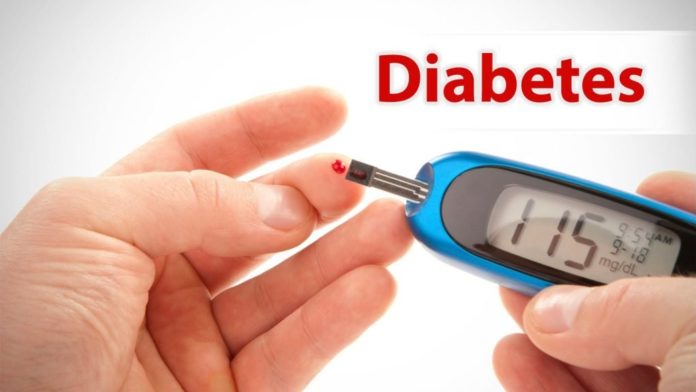Table of Contents
Diabetes in Men
Type-2 Diabetes is also known as adult-onset diabetes and non-insulin dependent diabetes. The form of diabetes that is mostly seen is the Type-2, and more than over 90 per cent of males are affected by this type.
The Type-2 Diabetes is much different than the Type-1 Diabetes, and the Type-2 diabetes patients do secrete insulin through their pancreas. However, the amount is not sufficient to regulate body functions. The body becomes insulin resistant, and the sugar present in the body cannot be utilized appropriately. As a result, the sugar gets accumulated in the blood, and this is harmful to the body.
Many problems can occur due to this accumulation of sugar. These problems include cash for test strips–
- Dehydration – The rate of urination increases in the body due to the counter-reaction of sugar getting accumulated in the body. The body naturally tries to eliminate as much excess sugar it can. Hence, the urination rate increases. With sugars getting lost through urine, the body loses quite an amount of water as well. This causes dehydration.
- Hyperosmolar nonketotic diabetic coma – This situation is a result of dehydration. With a lot of water getting lost from the body and patients not taking up adequate fluids, such life-threatening conditions can occur.
- Body damage – With the continuous accumulation of sugar in the blood, the small blood vessels and the nerves get damaged with time. The other organs, like kidneys, eyes, and heart, are also damaged. The most common condition is Atherosclerosis, where the patient experiences a stroke or heart attack due to large arteries getting hardened.
Which people get Type-2 Diabetes?
Usually, Type-2 Diabetes can happen to anyone. There is no hard rule that separates anyone or excludes someone for surely getting Type-2 Diabetes. No one can precisely say that they will not be affected by Type-2 Diabetes with 100 per cent surety. The people who are more prone to getting it are generally the overweight and obese people. Also, people who have Type-2 Diabetes in the family, and those who suffer from metabolic syndrome have a great chance to be affected by Type-2 Diabetes. Older people are also prone to get Type-2 Diabetes due to the body’s increasing intolerance for sugars with age. Therefore, the aged people need to check and regulate their diet more carefully.
Type-2 Diabetes: The Causes
Type-2 Diabetes is seen as much more than Type-1 Diabetes. Even then, the understanding of Type-2 Diabetes is not much prominent. There is no single factor which causes it.
In many cases, family members of a Type-2 diabetic patient have been affected as well. However, whether it is due to a genetic factor or due to inheriting is not known. Studies are still undergoing, and the exact cause has not yet been found.
Diabetes symptoms in men
There are many symptoms of the Type-2 Diabetes which are subjective to different persons. The most common symptoms are-
- Increase in thirst
- Increase in hunger
- Mouth becoming dry
- Occasionally vomiting and feeling of nausea
- Increased frequency of urination
- Easily feeling fatigued
- Blurry vision
- Hands and feet becoming numb or tingling
- Infections in urinary tract and skin frequently
- After a diabetic coma, though this is a very rare case
Type-2 Diabetes: Diagnosis
In most cases, Type-2 Diabetes is checked by finding any abnormalities in the levels of blood sugar. The urine may also be tested, and ketone bodies and sugar are checked on it.
For the proper diagnosis of Type-2 Diabetes, the patients need to undergo a casual plasma glucose test or fasting plasma glucose test.
Type-2 Diabetes: Complications
Unless Type-2 Diabetes is controlled well, the complications can be very serious. Patients can undergo situations like-
- Retinopathy – When diabetes is getting developed in the body, the eyes often become abnormal. A person with normal eye vision can also get affected in the eyes. To prevent such conditions, one must also control cholesterol and blood pressure in addition to sugar levels. In many cases, though, patients are not affected by it.
- Damage to kidney – The Type-2 diabetes patients are highly prone to get their kidneys damaged. This risk increases well with time. The more time a patient is affected with diabetes, the higher is the risk of getting the kidney damaged. This is a very serious complication, and the patients can get seriously ill over time. Kidney failures are quite common, and patients can also get heart diseases.
- Damage of nerve and poor circulation of blood – The patients can also get severe nerve damage, and the arteries get hardened. This leads to the inferior flow of blood in the limbs, and the level of sensation gets decreased drastically. As a result, the chances of being infected also increases. Patients are also more susceptible to ulcers. The healing rate reduces, which increases the amputation risk to quite an extent. The nerve getting damaged may also lead to problems in digestion, and patients often suffer from vomiting, nausea, and diarrhoea.
Diabetes in Women
Before we get to the point of diabetes in women, we need to know what diabetes mellitus is. When the blood sugar of a person becomes too high, then the metabolic disorder that is associated with it is called diabetes mellitus.
With malfunctioning of the pancreas to secrete insulin in the body, diabetes can be mainly classified into two types: Type-1 and Type-2 Diabetes.
Type-1 Diabetes is also known as juvenile diabetes, and the persons affected by it do not produce insulin in their body at all. This is because the body targets the beta cells of the pancreas, which are the key to produce insulin.
In Type-2 Diabetes, the patients do produce insulin in the body, but not in sufficient condition. As a result, the level of blood sugar increases, and the minimal amount of insulin does not help at all.
In many cases, Type-2 Diabetes is preceded by Prediabetes. This case is when you do not have enough high blood sugar to be officially declared as a diabetic patient, but you have high blood sugar. With no changes in food habits and lifestyle, Prediabetes can easily become Type-2 Diabetes within five years.
Signs of Diabetes in women
The signs and symptoms of Type-1 and Type-2 Diabetes are almost identical for men and women. There are few unique complications for women though. Some of those include-
- Pain and itching sensation in the vagina
- Oral yeast infections
- Vaginal discharge
- Sexual intercourse accompanied with pain
- Formation of white patches in mouth
- Soreness and redness
- Having trouble with swallowing and eating
- Inner cheeks and gums turning red and getting swollen
- Sexual drive getting decreased
- Polycystic Ovary Syndrome
- Infections in Urinary Tracts
Common Diabetic signs in Men and Women
Most of the common diabetic signs and symptoms are common in both men and women. These include-
- Having frequent hunger and thirst
- More frequent urination
- Sudden gain or loss of weight
- Getting too much fatigued
- Persisting irritability
- Blurry vision
- Wounds taking more time to heal
- Experiencing Nausea
- Infections in Skin
- Body creases getting darkened
- Odor of breath becoming fruity or sweet
- Hands and feet with tingling sensation or numbness
Even some complications can be the same for both the types of diabetes, which include high blood sugar, low blood sugar, the problem with eye and skin, and increasing risk in amputation.
Does diabetes affect pregnancy?
When controlled, diabetes does not affect pregnancy. However, uncontrolled blood sugar will impose a high risk to both the mother and baby. When diabetes is unchecked, a pregnant mother may face-
- Difficulty in delivery
- Premature delivery
- Preeclampsia
- Miscarriage
- Defects in birth
- The newborn has low blood glucose
- A large baby is born
- Newborn affected with jaundice and breathing troubles
- Worsening of kidney and eyes for mother
- Increasing infections in urinary bladder
Gestational Diabetes: Signs and Symptoms
When a woman is pregnant for 24 to 28 weeks, gestational diabetes may occur, which is why it is checked during this period. The symptoms related to gestational diabetes is the same as regular diabetes, and the urine test is the main process of identifying it.
A pregnant woman needs more glucose for the nourishment of both herself and the baby. When the insulin secreted in the mother’s body is not enough to compensate for both baby and mother, gestational diabetes is developed. In most cases, though, gestational diabetes goes away after pregnancy. Such women, however, have a higher chance of developing Type-2 Diabetes.
The chances of having gestational diabetes are more when the mother is-
- Obese or overweight
- Diabetes runs in the family
- 25 or more years of age
- Previously experienced gestational diabetes
- Affected by Polycystic Ovary Syndrome
- Getting Prediabetes
- High levels of cholesterol and blood pressure
- Patients of heart diseases
Can Diabetes Cause Death?
Anyone irrespective to gender and age can get affected with diabetes. However, the problems and impact it has on men and women are quite different. Recent studies have shown that the number of deaths occurring due to diabetes is significantly less for males than females.
Usually, women are less prone to heart attacks. With diabetes, heart failure chances increase drastically. In many cases, diabetes can be fatal and even cause death.
Diabetes affects women much stronger than men. Mostly it is seen that-
- Kidney diseases are stronger for women than men
- Women are depressed two times than men with diabetes
- Blood sugar control in women is also poor when compared to men
The main reason why diabetes affects women more than men is because of the drop of HDL or High-Density Lipoproteins. Such conditions increase the risk of heart attack, and women naturally have lower estrogen. This can cause kidney failures too.
What to do if I think I have diabetes?
If you are noticing some symptoms that you think are of diabetes, visit a doctor immediately. The faster it is diagnosed, the better control and treatment can be done. Otherwise, organs can get heavily damaged with time.
Doctors mainly check your levels of blood sugar. If you are diagnosed positive, doctors will help you make a plan such that you can control your blood sugar. Medicines, exercises, healthy and balanced diets, and insulin package are often prescribed.
Diabetes in Children: Type-1
When a child is affected by Type-1 Diabetes, his or her body stops producing insulin. This missing insulin needs to be replaced somehow. This diabetes was also called insulin-dependent diabetes.
When a child is diagnosed with Type-1 Diabetes, it can come as a shock. All of a sudden, a child and their parents have to learn to take and giving injections. Regular monitoring of blood sugar and carbohydrates will also start at a very young age.
Such children require special care. With the advancement of medicines and treatment techniques, children with Type-1 Diabetes are gradually learning to live with it normally.
Symptoms of Diabetes in children
The symptoms of Type-1 Diabetes can be found in children quite quickly, and these symptoms mainly consist of-
- Increase in the frequency of thirst and urination – When excess sugar is getting accumulated in the blood of a child, the tissues are deprived of fluids. Hence, the child becomes thirsty quite frequently. With more and more drinking, urination rate automatically increases. A child in his middle school may suddenly wet the bed when affected by Type-1 Diabetes.
- Sudden hunger – Due to the lack of insulin, the child does not get enough glucose in the body cells. Hence, the overall energy is reduced for the organs and muscles. This, in turn, causes extreme hunger at sudden times.
- Loss of weight – Even if a diabetic child is eating more, weight loss can still happen. This is because the entire energy provided by the glucose cannot enter the cells. This can reduce the body fats, and sudden weight loss can be experienced.
- Feeling fatigued – when the body cells are not getting enough energy, it is quite normal that a child will become easily tired and feel constant fatigue.
- Changes in behaviour and persisting irritability – The child can suddenly undergo problems with extreme mood swings, and the overall physical and academic performance may get declined.
- Breath with a fruity smell – When the body fat is getting burned, ketones are involved. This, in turn, causes the breath with a fruity odour.
- Vision becomes blurry – With the blood sugar level on the higher side, the vision becomes blurry. The child generally experiences this as the lenses present in the eyes are deprived of fluid. This makes focusing on things difficult.
- Infection of yeast – Female children with Type-1 Diabetes can experience yeast infections in their genitals. As for babies, diaper rashes are quite common.
Causes
The cause of Type-1 Diabetes in children is not known. However, generally, it is seen that the pancreatic cells that secrete insulin are targeted by the body’s immune system. Environmental, as well as genetic factors, are also vital.
Diabetes in Children: Type-2
Type-2 Diabetes is mainly considered as a disease affecting the children’s body processing due to the improper management of glucose. Whenever a child is diagnosed with diabetes, it is very important to take measures immediately. Ignoring it can be fatal, and the child’s future can be greatly affected by it.
Generally, Type-2 Diabetes is seen in adults. This is the reason why it is also known as adult-onset diabetes. At present, it has been seen that the number of children getting affected by Type-2 Diabetes is increasing significantly.
Symptoms of Diabetes in children
It has been seen that Type-2 Diabetes takes some time to develop in children. In many cases, children with Type-2 Diabetes do not show any symptoms for an extended period.
The main symptoms faced by children in Type-2 Diabetes are almost the same as Type-1 Diabetes. These symptoms mainly include an increased rate of thirst and urination, loss in weight, too much fatigue, blurry visions, and wounds taking a longer time to heal.
Children with Higher Chance of Getting Affected by Type-2 Diabetes
It has not yet been discovered what exactly causes Type-2 Diabetes in children. There is also no clear cut indication of why some children are not affected by Type-2 Diabetes, while others get affected. In any case, there are some high-risk conditions and factors which suggest that there is a higher chance of getting affected if the child is-
- Overweight – Type-2 Diabetes is mainly seen in overweight children. With the increase in fatty tissue present in the body, the bodies tend to become insulin resistant easily. Obesity is directly related to Type-2 Diabetes in children.
- Not being active – When a child is less active, sedentary habits are formed. This is also a risk factor for Type-2 Diabetes in children. With the lack of physical activity, it becomes tough to naturally control body weight and utilize glucose.
- Family history – With any family members with Type-2 Diabetes, children are more likely to get affected.
- Age and gender – In most cases, children are seen to develop Type-2 Diabetes when they hit puberty. In the phase of adolescence, girls are more prone to develop Type-2 Diabetes than boys.
- Gestational Diabetes and birth weight – If a child had a low birth weight, or if the mother was affected by gestational diabetes at the time of delivery, the child is at a very high risk of developing Type-2 Diabetes.
Prevention
Parents can play a major role in helping children with the prevention or management of Type-2 Diabetes. Children should always be encouraged to have healthy foods, do lots of physical work and have a healthy body with a proper weight. In some cases, simple exercise and diet are not enough for controlling Type-2 Diabetes in children. In such cases, insulin treatment or oral medication is recommended.








